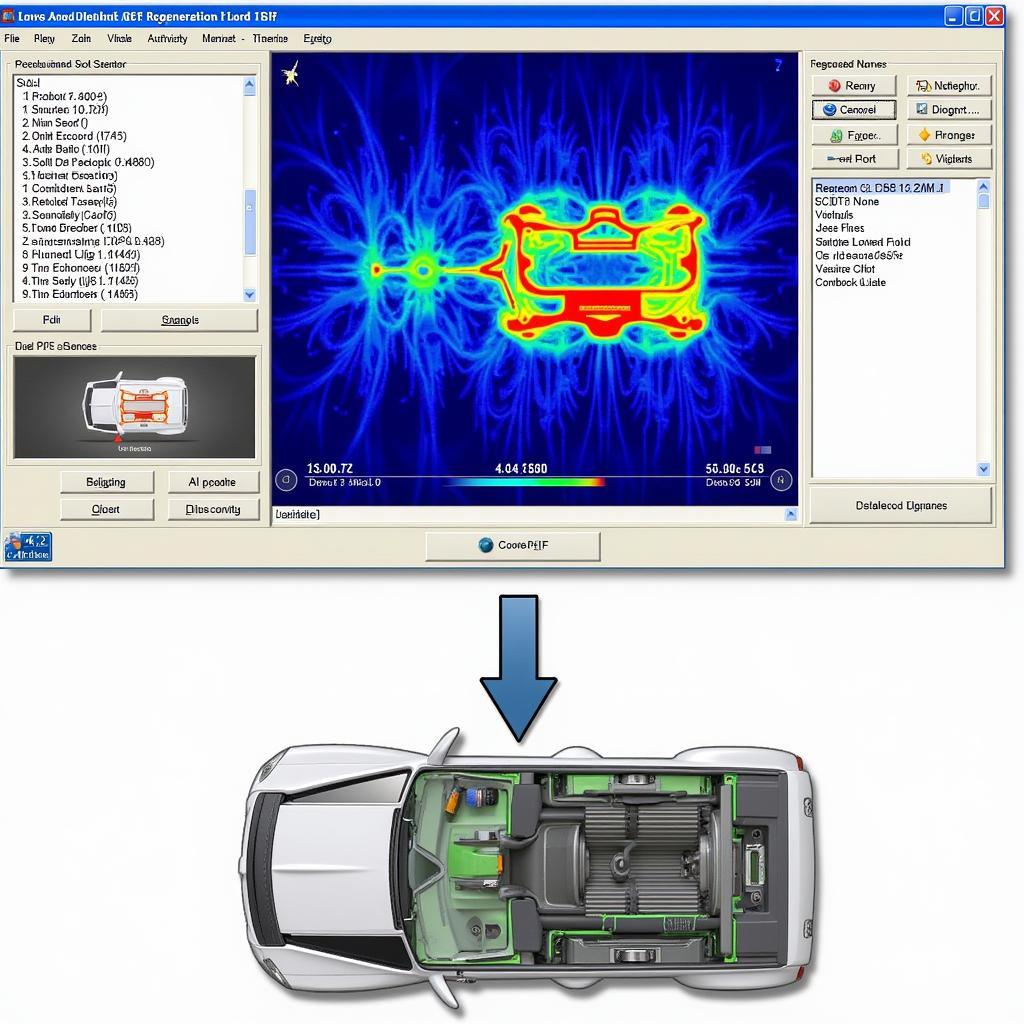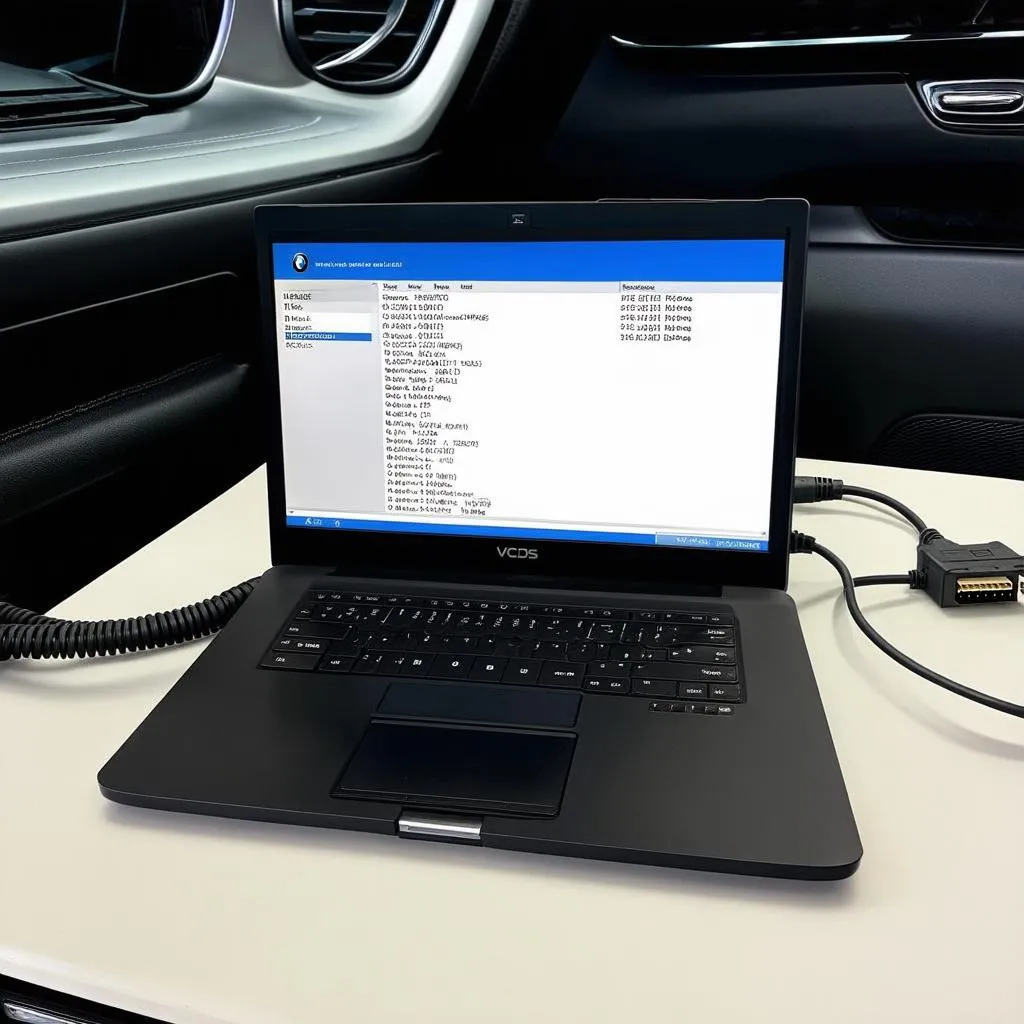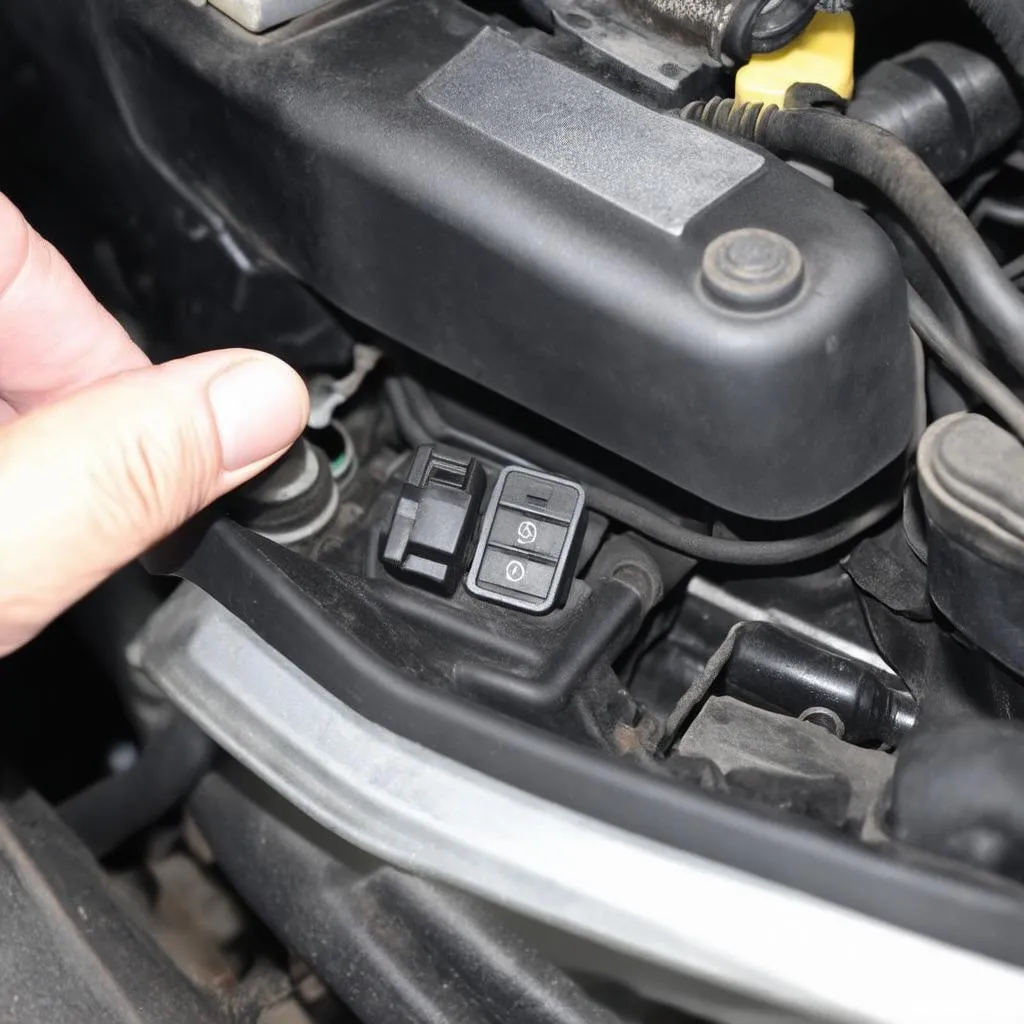Performing a DPF regeneration with VCDS can seem daunting, but understanding the process and following the correct steps makes it manageable. This guide provides a comprehensive overview of how to start DPF regeneration using VCDS, covering everything from checking DPF soot levels to initiating and monitoring the regeneration process.
Understanding how to start a DPF regeneration with VCDS is crucial for maintaining the health and performance of your diesel engine. The Diesel Particulate Filter (DPF) traps soot from the exhaust gases, and regular regeneration burns off this accumulated soot, preventing blockages. Using VCDS, a powerful diagnostic tool, allows for precise control over this process. Let’s delve into the details. After understanding the basics, you may want to learn more about specific vehicles like the VW Touareg. You can find more information about VW Touareg DPF regeneration with VCDS here: vw touareg dpf regeneration vcds.
Preparing for DPF Regeneration with VCDS
Before initiating a DPF regeneration using VCDS, several prerequisites must be met. These checks ensure the process is safe and effective, preventing potential issues and optimizing regeneration results.
Checking DPF Soot Level
The first step is to check the DPF soot level using VCDS. This measurement indicates how much soot has accumulated in the DPF, helping determine if regeneration is necessary. Accessing the appropriate module within VCDS displays this crucial data. You can learn more about how to check your DPF soot levels in our detailed guide: how to check dpf soot level vcds.
Ensuring Sufficient Fuel and Engine Conditions
Adequate fuel is essential for a successful DPF regeneration. Low fuel levels can interrupt the process, leading to incomplete regeneration and potential DPF damage. Additionally, the engine should be at its optimal operating temperature before starting the regeneration process.
Initiating DPF Regeneration with VCDS
Once the prerequisites are met, the DPF regeneration can be initiated through VCDS. This involves accessing specific control modules within the software and activating the regeneration function. The steps may vary slightly depending on the vehicle model.
Selecting the Correct Control Module
Navigating to the correct control module within VCDS is crucial. This module contains the functions necessary to initiate and monitor the DPF regeneration process. The module selection depends on the specific make and model of the vehicle.
Activating the Regeneration Function
Within the selected control module, the DPF regeneration function can be activated. This triggers the regeneration process, initiating the burning of accumulated soot within the DPF. Regular VCDS DPF regeneration is vital to engine health. For a more detailed look at the process, visit: vcds dpf regeneration.
 DPF Regeneration with VCDS Process
DPF Regeneration with VCDS Process
Monitoring the DPF Regeneration Process
After initiating the regeneration, it’s vital to monitor the process through VCDS. This monitoring ensures the regeneration proceeds as expected and allows for early detection of any potential issues.
Observing Key Parameters
VCDS displays various parameters related to the DPF regeneration, including soot levels, temperatures, and regeneration status. Observing these parameters provides real-time insights into the process.
Addressing Potential Issues
While monitoring, be prepared to address any potential issues that may arise during regeneration. This might involve adjusting parameters within VCDS or taking other corrective actions as needed.
If you’re experiencing difficulties, it might be beneficial to seek professional help. Find a qualified VCDS diagnostic technician near you: vcds diagnostic near me.
Post-Regeneration Checks
Once the DPF regeneration is complete, performing post-regeneration checks is essential. This verifies the success of the regeneration and ensures the DPF is functioning optimally.
Verifying Soot Level Reduction
Checking the DPF soot level after regeneration confirms the effectiveness of the process. A significant reduction in soot levels indicates successful regeneration.
Inspecting for Error Codes
Scanning for error codes after regeneration can reveal any underlying issues that may have contributed to DPF accumulation or problems during regeneration.
“Regular DPF regeneration is crucial for maintaining a healthy diesel engine. Neglecting this can lead to costly repairs down the line.” – John Miller, Automotive Diagnostics Specialist.
Expanding your VCDS capabilities with plugins can enhance your diagnostic and maintenance tasks. Learn more about available plugins: vcds plugins.
In conclusion, learning how to start DPF regeneration VCDS is a valuable skill for any diesel vehicle owner or technician. By understanding the process, preparing correctly, and monitoring the regeneration, you can maintain the health and performance of your DPF, preventing costly repairs and ensuring optimal engine efficiency.
FAQ
-
What is DPF regeneration? DPF regeneration is the process of burning off accumulated soot in the Diesel Particulate Filter.
-
Why is DPF regeneration necessary? It prevents DPF blockages, maintaining engine performance and efficiency.
-
How often should I perform DPF regeneration? This depends on driving habits and vehicle model, consult your owner’s manual.
-
What are the risks of not performing DPF regeneration? Neglecting DPF regeneration can lead to reduced engine performance, increased fuel consumption, and eventually, costly DPF replacement.
-
Can I perform DPF regeneration myself? Yes, using VCDS and following the proper procedures.
-
What if the DPF regeneration fails? Consult a qualified technician for diagnosis and repair.
-
Is VCDS the only tool for DPF regeneration? No, other diagnostic tools can perform this function, but VCDS offers precise control.
For further assistance, please contact us via Whatsapp: +1 (641) 206-8880, Email: CARDIAGTECH[email protected] or visit us at 276 Reock St, City of Orange, NJ 07050, United States. Our customer support team is available 24/7.


